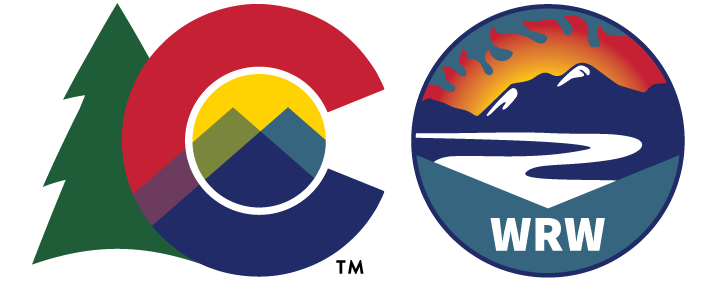
HAZARD:
Riverine Erosion + Sedimentation
-
Fluvial processes such as streambank erosion, deposition of sediment and woody debris, scour, and cutting of new channels are the result of physical interactions between water, sediment, vegetation, and debris in a stream corridor.
Wildfires can significantly increase the amount of runoff from hillslopes, flood waters, and the quantity of sediment and debris that is delivered to a creek or river channel. This increased amount of water, sediment, and debris can lead to rapid, frequent, and/or large expressions of these natural fluvial processes.
-
Fluvial processes become hazardous when infrastructure, houses, businesses, and other community or commercial values are constructed in locations where fluvial processes naturally occur i.e., stream corridors.
Sometimes, these natural fluvial processes can even be amplified by human alterations to stream corridors such as the placement of undersized bridges, culverts, and diversion structures that impede natural sediment transport, or projects that reconfigure and disconnect channels from their floodplains.
Since these processes occur throughout the floodplain and also sometimes also impact hillsides or terraces many feet away from and above the surface of the water in a stream channel, any human infrastructure is at risk if it is located within the Fluvial Hazard Zone. Accounting for the full area of potential impacts is critical to accurately plan for the protection of life and property.
-
Similar to flooding, other common mitigation strategies include:
▶Monitoring and Alerts: Flash flood alert systems should be deployed in burn areas to collect and disseminate real-time information and inform evacuations and public notifications.
▶Building Energy Dissipation and Sediment Storage into the Stream System Through Floodplain Reconnection. In certain landscapes, restoring or enhancing existing floodplain connection and vegetation can trap sediments and reduce impacts to downstream residents, infrastructure, and water users.
▶Infrastructure and Utility Retrofit/ Relocations: Road crossings tend to be significantly undersized and prone to overtopping and failure when encountering post-wildfire flows, debris and sediment. Communities should identify roadway corridors that are critical for emergency access, evacuation, or economic use and consider upsizing those crossings ahead of a fire or after a fire to protect against roadway failures. This may include upsizing crossings or transitioning culverts to free-span bridges. At the same time, trash and debris racks may be considered in parallel to protect against plugging of the crossings.
Similarly, moving utility lines and poles outside of high hazard areas will reduce a community’s vulnerability.
▶Address Stream Stability and Erosion: In critical locations, bank protection should be considered to limit or slow down erosion processes during high flows. Bank protection could include simply regarding and vegetating the channel banks, installation of large wood revetment, placement of setback riprap, or even hardened flood walls or sheet pile to protect critical infrastructure.
Stream bottoms are also susceptible to erosion and incision and sometimes stream bottoms can drop several feet after one flood event. This is especially important where infrastructure crosses streams, such as water lines, sewer lines, and roadways. In these locations, grade control structures might be considered to maintain the channel bottom elevation and protect infrastructure.




